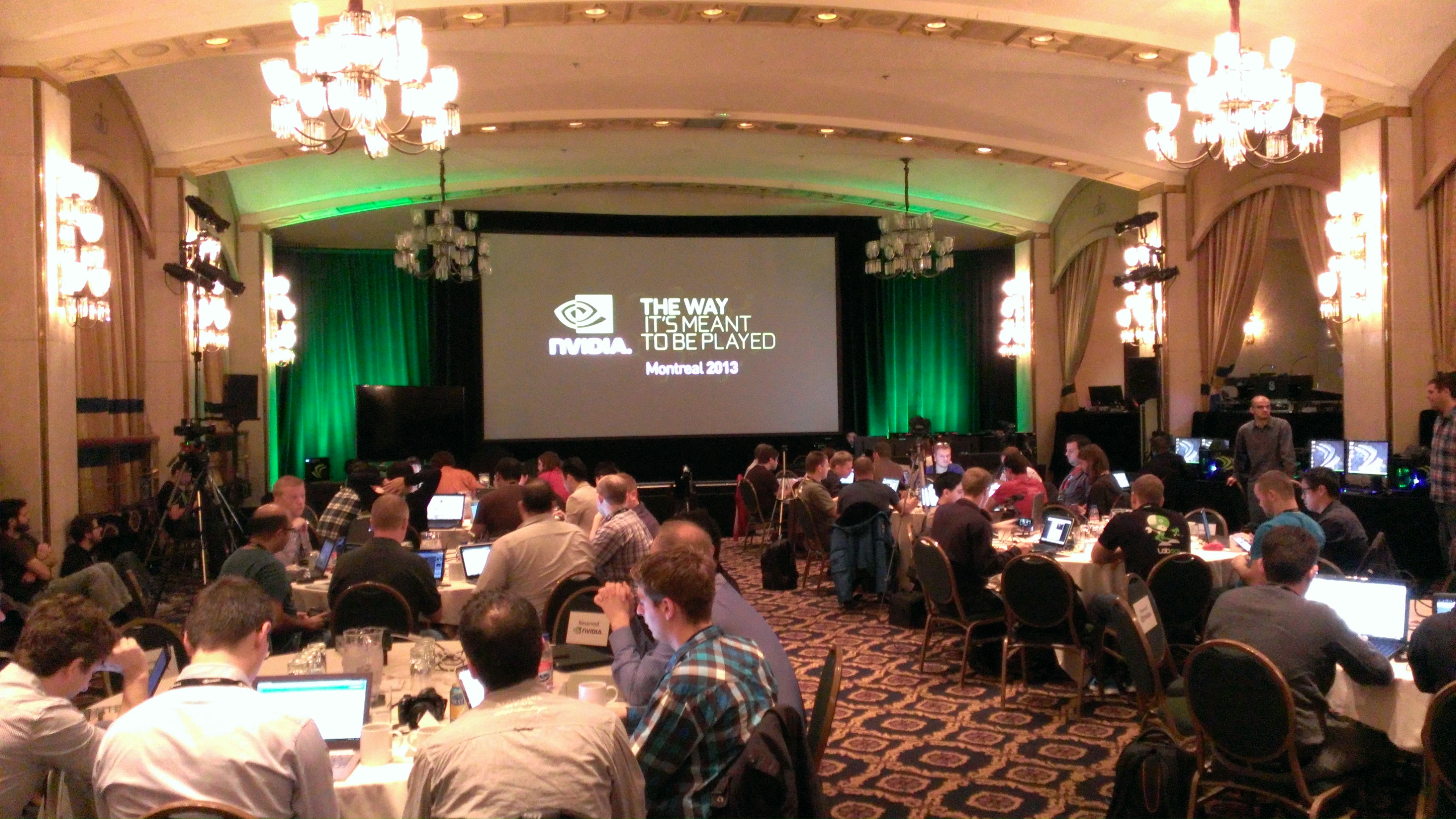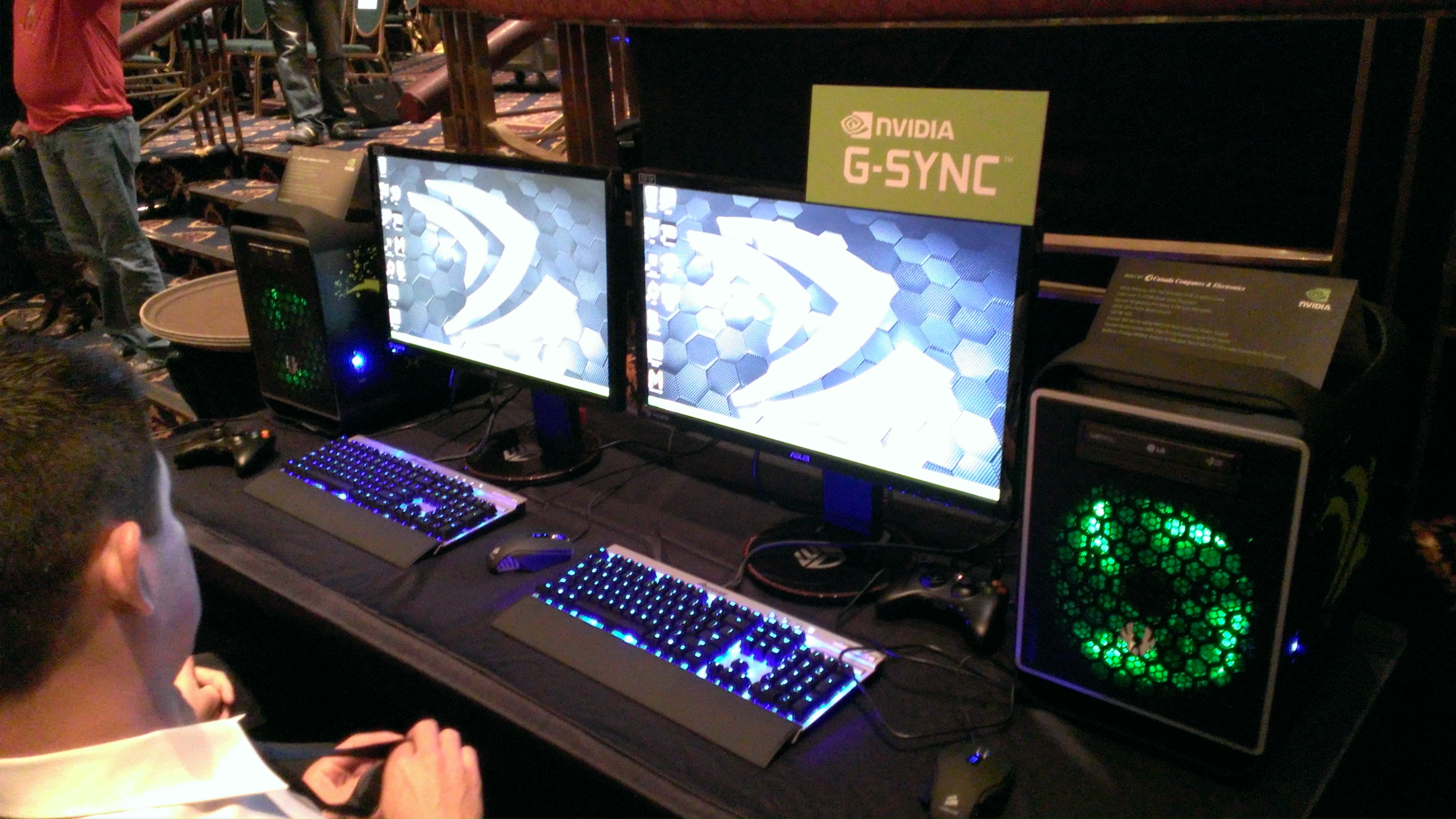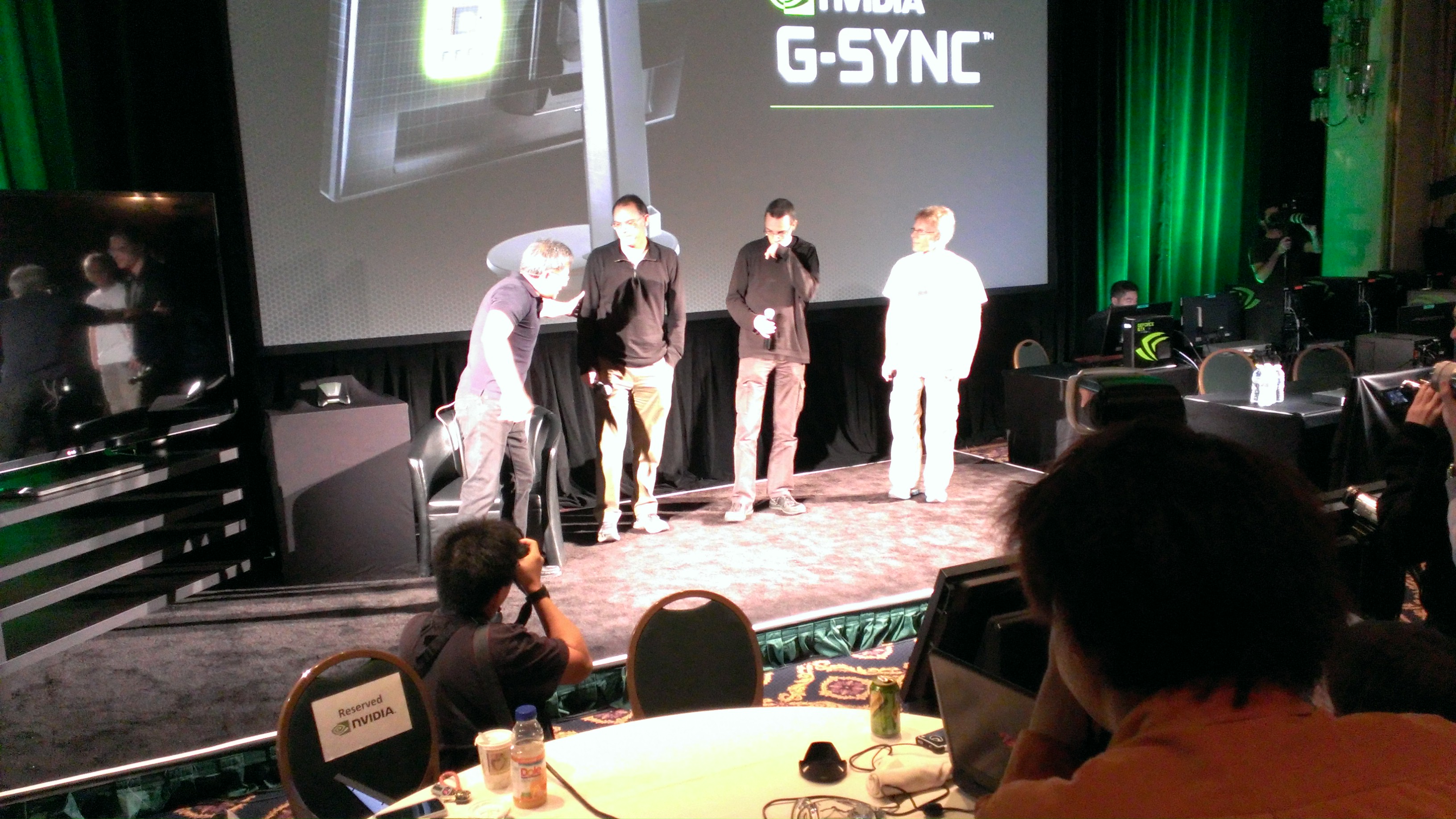Nvidia Announcements: GeForce GTX 780 Ti, G-Sync, And More
At the Nvidia "The Way It's Meant To Be Played" press event in Montreal, Nvidia made a few surprising announcements including a new graphics card and an impressive video synchronization technology called G-Sync.
Nvidia dropped a few interesting announcements at its press event in Montreal today. Here are some of the important highlights:
The 2013 Holiday Game Bundles:
The company is offering new holiday game bundles for upper-mid-range and high-end GeForce GPUs. GeForce GTX 770, 780, and Titan buyers will receive download codes for Batman: Arkham Origins, Splinter Cell: Blacklist, and Assassin's Creed 4 : Black Flag. They also get a $100 off of the company's Tegra 4-based Shield game console. GeForce GTX 660 and 760 buyers will get a reduced bundle with Splinter Cell: Blacklist, Assassin's Creed 4: Black Flag, and a $50 discount on Shield.
Nvidia Gamestream, Shadowplay, and Twitch:
The company announced Gamestream, a technology to stream video to televisions via Wi-Fi (limited to 720p) or Ethernet (1080p) via a Shield console. This isn't particularly new, since we saw an earlier iteration of Gamestream work at the Shield reveal event, but it was impressive to see it work at 1080p on a large 4K screen.
We also saw a Shadowplay demo. That's the technology, also previously announced, that Nvidia uses to capture and encode 1080p video using the NVEnc hardware on its GPU, offloading the workload from the CPU, keeping gameplay smooth during the process. By default, it will automatically save the last 20 minutes of gameplay. Manually invoked, it can save up to 4 GB of video on Windows 7, and is only limited by the size of your hard drive in Windows 8.
The company is partnering with online video provider Twitch. We saw a combined demo of Gamestream, Shadowplay, and Twitch, where streamed video was sent directly to Twitch and viewed by spectators at 620p with only about a two-second lag behind real-time.
Nvidia G-Sync
This was the big reveal, and it came as a surprise to us. Nvidia created a technology to virtually eliminate many of the worst problems faced by gamers: stutter, lag, and screen tearing. The company calls it G-Sync.
The fundamental root of these problems is the disconnect between the monitor's refresh rate and the rate at which the graphics card produces frames of video. Because a monitor's refresh rate is fixed, and the graphics card can render at a variable rate depending on load, both components inevitably fall out of sync and create the problems our eyes see as stutter and frame tearing. With v-sync enabled, screen tearing is eliminated, but input lag is introduced and stuttering is still possible.
Get Tom's Hardware's best news and in-depth reviews, straight to your inbox.
Nvidia's G-Sync leverages Kepler-based GPUs and a module included in G-Sync-enabled monitors to control the frame rate at the source. The GPU dictates the frame rate, not the monitor. Stuttering is almost completely removed, lag is reduced to a minimum, and tearing is eliminated. We saw an incredibly impressive demo that showed two identical PCs (both with a GeForce GTX 760) playing identical content, one with G-Sync, and one without, at 60 Hz. The difference is incredibly obvious, and G-Sync made 40 FPS look incredibly smooth without tearing or lag.
Unfortunately, G-Sync requires its own ecosystem, so new G-Sync-enabled monitors are required, equipped with the new G-Sync scaler, and these monitors are capable of 144 Hz refresh rates. Asus, Ben-Q, Philips, and Viewsonic are already on-board, and we should see the first G-Sync monitors on the market early 2014. In fact, Asus tells us that its VG248QE will debut next year at $400 with Nvidia's G-Sync technology. Nvidia even brought some surprise guests who vocalized their support for G-Sync: John Carmack, Tim Sweeney, and Johan Andersson.
The GeForce GTX 780
Finally, Nvidia announced the GeForce GTX 780 Ti. While it didn't discuss specifications, we suspect it's another spin on the GK110 GPU from the Titan and GTX 780. The company expects this card to be available in mid-November.
Those are the announcements and news from the show so far today, keep checking back with Tom's Hardware for more information on these new technologies.
Don Woligroski was a former senior hardware editor for Tom's Hardware. He has covered a wide range of PC hardware topics, including CPUs, GPUs, system building, and emerging technologies.
-
Memnarchon When we will see a review? Cause Nvidia said:Reply
Reviewers will receive GTX 780 Ti samples "soon". -
bison88 How are they even going to make this worthwhile even if it's just $100 more than the GTX 780? Double the memory? Big whoopie. How will it compete with the high-end Titan that is barely 10% faster at stock speeds and costs $1,000? Without a price drop on the GTX 780 and the 780 Ti taking its pricing place I can't see why anyone would buy it for a higher price when they can already do a small tweak on a $650 card and beat a $1,000 one.Reply -
toddybody The G-Sync sounds incredible to me...though I cant be ditching my current monitors in response :(Reply -
kulmnar G-Sync is just another name for v-sync (sound familiar?). G-sync is simply the equivalent of limiting a video card's refresh rate to the monitor refresh rate. This technology has been around for decades. Nvidia must be running out press releases to advertise the re-invention of a technology that has been around a while.Reply -
PepitoTV Reply11746658 said:How are they even going to make this worthwhile even if it's just $100 more than the GTX 780? Double the memory? Big whoopie. How will it compete with the high-end Titan that is barely 10% faster at stock speeds and costs $1,000? Without a price drop on the GTX 780 and the 780 Ti taking its pricing place I can't see why anyone would buy it for a higher price when they can already do a small tweak on a $650 card and beat a $1,000 one.
This, is like this card was born dead, I don't see a reason to get this if it is in between the 780 and the Titan when the pricing on the 780 will drop and is well known how you can push it to match its big brother.
-
Mousemonkey Reply11746701 said:G-Sync is just another name for v-sync (sound familiar?). G-sync is simply the equivalent of limiting a video card's refresh rate to the monitor refresh rate. This technology has been around for decades. Nvidia must be running out press releases to advertise the re-invention of a technology that has been around a while.
If it has been around for ages why has the module not been fitted to every monitor in existence? -
WithoutWeakness Reply11746701 said:G-Sync is just another name for v-sync (sound familiar?). G-sync is simply the equivalent of limiting a video card's refresh rate to the monitor refresh rate. This technology has been around for decades. Nvidia must be running out press releases to advertise the re-invention of a technology that has been around a while.
You clearly didn't watch the event or follow any of the live blogs that occurred. V-sync caps your GPU's framerate to match your monitor's frame rate (generally 60hz) but does nothing to pace the rate at which frames are displayed on your screen. The output from your GPU is dynamic; some frames take more or less time to draw depending on their complexity and the load on the GPU. Your montor's refresh rate is static and does nothing to compensate for the dynamic rate at which frames are fed from the GPU to the screen.
G-sync is Nvidia hardware inside the monitor that talks to the GPU and displays frames on the screen at the time they are fed from the GPU rather than relying on a static clock to determine when to draw frames. G-sync does not match the GPU's output to the monitor's refresh rate; it does the opposite. It matches the rate at which the monitor displays frames to the speed at which the GPU can render them. This allows the frames that the GPU renders to be displayed as soon as they are ready to be fed to the monitor, eliminating stuttering and tearing from the picture all together.





